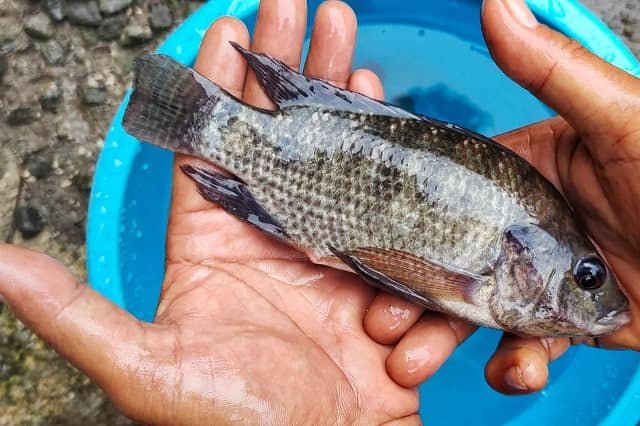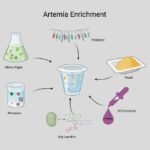
Nile tilapia thrives adequately even in the absence of omega-3 fatty acids (EPA and DHA) in their diet; however, their fatty acid profile can be enriched by incorporating finishing diets before harvesting to reach the desired DHA + EPA content.
Researchers have been exploring ways to further improve their nutritional value, particularly in terms of long-chain polyunsaturated fatty acids (PUFAs) omega-3, such as eicosapentaenoic acid (EPA) and docosahexaenoic acid (DHA).
These essential fatty acids are highly beneficial for human health and are recommended by the Food and Agriculture Organization of the United Nations with a daily intake of 250 mg of DHA + EPA in a 100 g fillet. Enriching the fatty acid profile of Nile tilapia not only enhances its nutritional value but also its economic potential as a nutraceutical.
In this regard, a team of researchers from the University of Sonora evaluated the rate of change in the fatty acid profile of Nile tilapia (Oreochromis niloticus) fillets in response to feeding with soy or fish oil.
The Study
In this study, a group of researchers conducted an 8-week bioassay to assess the rate of change in the fatty acid profile of Nile tilapia fillets by feeding them different diets.
The diets were formulated with soybean oil (SO) or fish oil (FO). Two additional treatments were included: feeding with FO for the first four weeks followed by SO for the remaining four weeks (FO/SO) and the reverse treatment (SO/FO). The goal was to determine the impact of these dietary choices on the fatty acid composition of the tilapia fillets.
Versatile Growth Performance
The results of the study were quite revealing. The researchers found that the choice of dietary lipid source did not significantly affect the overall growth of Nile tilapia. This included factors such as weight gain, specific growth rate, daily weight gain, and survival rates, which remained consistent across all dietary treatments.
Furthermore, feed efficiency, body indices, and the proximate composition of the fillet were similar among all treatment groups. This highlights the versatility of Nile tilapia in efficiently utilizing different lipid sources in their diets without compromising their growth and survival rates.
Stay Always Informed
Join our communities to instantly receive the most important news, reports, and analysis from the aquaculture industry.
Dietary Influence on Fatty Acid Profile
However, the real difference emerged concerning the fatty acid profile of the Nile tilapia fillets.
The study confirmed that the type of dietary lipid source directly influenced the fatty acid composition of the fillet. This means that by making specific dietary choices, it is possible to enrich the fish’s fillets with essential omega-3 fatty acids while maintaining growth and survival rates. This research opens the door to optimizing Nile tilapia as a nutraceutical, meeting the recommended daily intake of DHA + EPA, and bolstering its economic appeal in the market.
Conclusion
The findings of this study offer valuable insights into the potential for enhancing the nutritional value of Nile tilapia, making it a more desirable option for both consumers and the aquaculture industry. By carefully selecting the dietary lipid source, it is possible to enrich the fish’s fillets with essential omega-3 fatty acids while maintaining growth and survival rates. This research opens the door to optimizing Nile tilapia as a nutraceutical, meeting the recommended daily intake of DHA + EPA, and bolstering its economic appeal in the market.
The study was partially funded by the National Council for Science and Technology (CONAHCYT, Mexico).
Contact
Mayra L. González-Félix
University of Sonora, Department of Scientific and Technological Research
Bldg. 7-G, Blvd. Luis Donaldo Colosio s/n, e/Sahuaripa y Reforma
Col. Centro, C.P. 83000 Hermosillo, Sonora, México.
Email:mayra.gonzalez@unison.mx
Reference (open access)
Martin Perez-Velazquez, Jesus Encinas-Mungarro, Mayra L. González-Félix. 2024. Rate of change in the fillet fatty acid profile of Nile tilapia to attain a nutraceutical level of DHA + EPA for human consumption, Aquaculture, Volume 580, Part 1, 2024, 740270, ISSN 0044-8486, https://doi.org/10.1016/j.aquaculture.2023.740270.
Editor at the digital magazine AquaHoy. He holds a degree in Aquaculture Biology from the National University of Santa (UNS) and a Master’s degree in Science and Innovation Management from the Polytechnic University of Valencia, with postgraduate diplomas in Business Innovation and Innovation Management. He possesses extensive experience in the aquaculture and fisheries sector, having led the Fisheries Innovation Unit of the National Program for Innovation in Fisheries and Aquaculture (PNIPA). He has served as a senior consultant in technology watch, an innovation project formulator and advisor, and a lecturer at UNS. He is a member of the Peruvian College of Biologists and was recognized by the World Aquaculture Society (WAS) in 2016 for his contribution to aquaculture.




